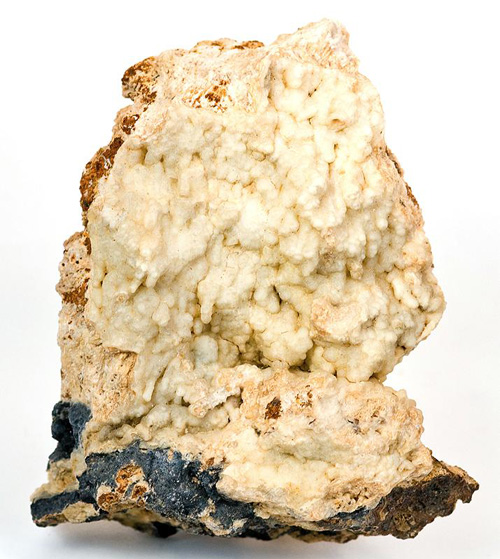The Mineral gibbsite

Gibbsite is one of the three component minerals of the economically important aluminum ore Bauxite. Gibbsite was first discovered in 1820 by Chester Dewey (1784-1867) of Williams College, Massachusetts. It was first thought to be Wavellite, but a year later it was determined to be a separate mineral species and was subsequently named Hydrargillite. It was then renamed Gibbsite in 1822 by John Torrey (1796-1873) in honor of George Gibbs (1776-1833) of New Haven, a noted mineralogist whose important collection was acquired by Yale University.
Color
White, gray, colorless, light green, green, greenish-blue, yellowish-brown, reddish-brown
Crystal System
Monoclinic
Uses
Gibbsite, being an important component of Bauxite, is an important ore of aluminum.
Noteworthy Localities
Localities where collection-worthy Gibbsite specimens have been found are very sporadic. The type locality where this mineral was first described is Richmond, Berkshire Co., Massachusetts. An outstanding, aesthetic green botryoidal form resembling Prehnite has been recently described in Xianghualing, Linwu, Hunan Province, China; and a one time find of bright greenish-blue Gibbsite first thought to be Hemimorphite occurred in Baoshan, Yunnan Province, China. Light bluish-green botryoidal crusts of Gibbsite came from the Kamariza Mines, Agios Konstantinos, Lavrion District, Greece; and microscopic colorless crystals, sometimes twinned from the Saga 1 Quarry, Mørje, Telemark, Norway. White Gibbsite is found associated with bright orange-red Crocoite, and sometimes even as an alteration of the Crocoite, at Dundas, Tasmania, Australia.
Distingushing Similar Minerals
Smithsonite, Wavellite, Hemimorphite, and Prehnite all have a higher specific gravity.